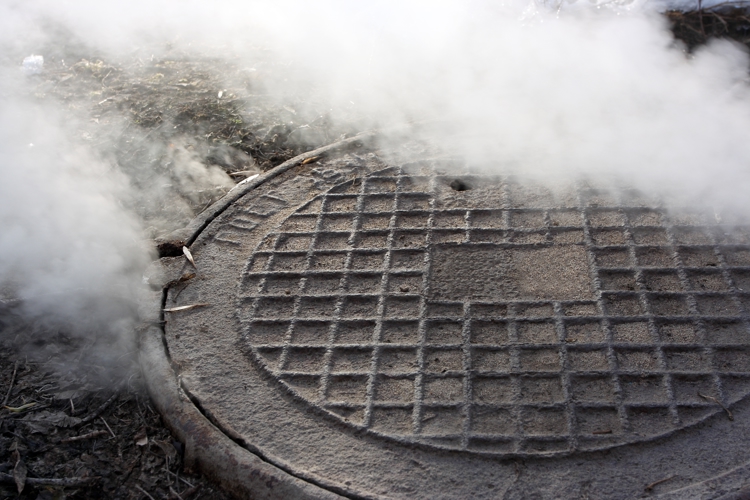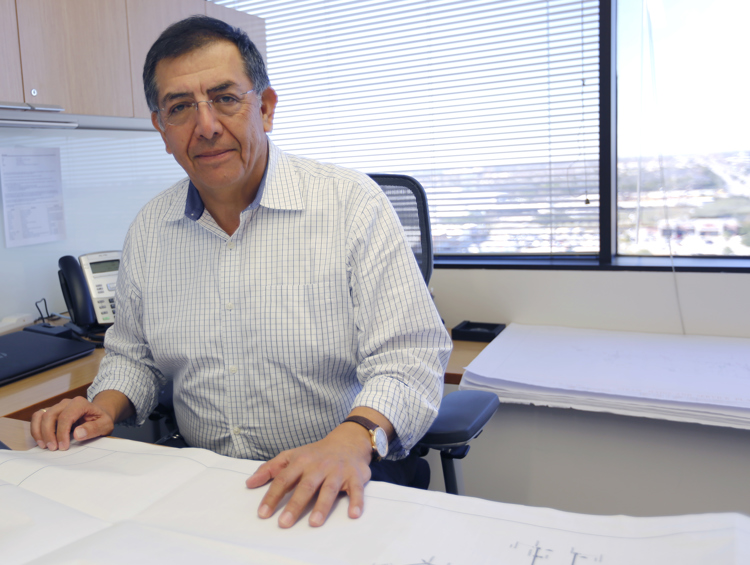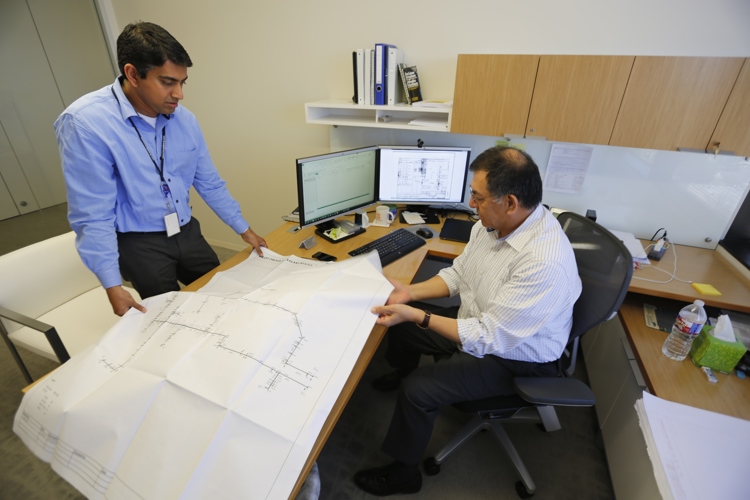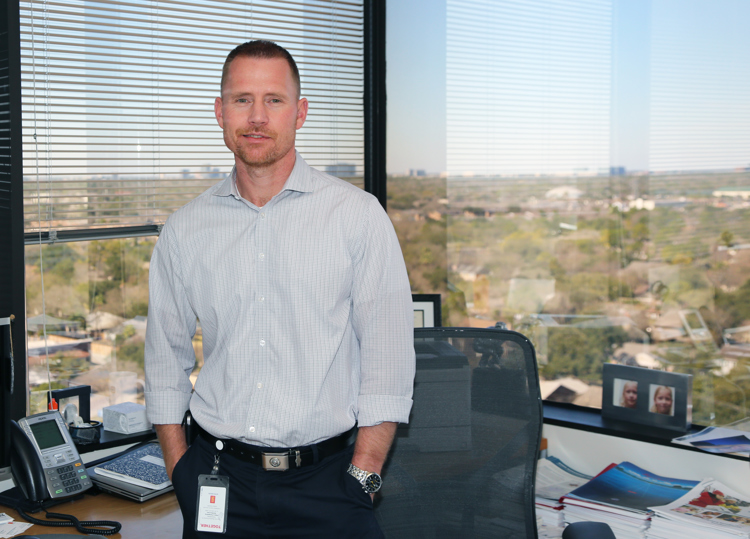
In Houston, KONGSBERG is preparing for the digital revolution. Software developed for oil and gas has already found new areas of application.
-
Text:OVE RONNY HARALDSEN
Photo:OVE RONNY HARALDSEN
-
Ove Ronny HaraldsenGroup Communication Manager
On 11 February, KONGSBERG announced that the company would reorganize its oil and gas business area. Departments that have been working with software and simulation will be incorporated in Kongsberg Digital over the first six months of 2016. The same applies to the simulation teams at Kongsberg Maritime.
The new subsidiary will be a hub for the development of digital products and solutions, and an important driver for the entire group’s digitalisation. From the beginning, Kongsberg Digital will have about 450 employees and a significant portfolio, selling advanced computer, software and simulation products.
A NEW BUSINESS MODEL
In Houston, two of the departments who will become part of KONGSBERG’s digital initiative are located. These departments mainly work with software and simulation for drilling operations, production optimisation and decision support systems. A major project that for the last few years has been run from the office in Houston is BP Well Advisor.

The system is a development of the SiteCom product that monitors the most critical parameters during drilling operations. The data is entered into an analysis tool that provides good advice on how to operate safely. The aim of Well Advisor is to reduce expensive downtime by providing the operators with a real-time decision support tool. In charge of this work is John Wearing, Program Manager of Drilling & Wells.

“Well Advisor has been an efficiency measure that has saved more money for BP than anything else in this area. They have saved 450 million dollars. The contract with BP means that KONGSBERG has the IP rights to the solution, and we are now working at commercialising the solution outside BP”, explains John Wearing.
“The oil and gas industry is under extreme pressure. What is the situation here in Houston”?
“Surprisingly optimistic. We are receiving lots of enquiries and globally there is an upturn of interest. Obviously, there will still be pressure on prices, but we are seeing significant opportunities because of the fact that the oil companies are now looking for ways to reduce their operating costs. The other thing we are seeing is that the dynamic of the business model is changing dramatically. Cloud-based services are changing the way digital technology is being delivered to the customer. Their enquiries are showing us that customers are looking for solutions that allow them to log into cloud-based services and securely store data. This is a development that we have seen coming, and this is why we are now launching these types of solutions”, explains John Wearing.
OIL TECHNOLOGY FOR DISTRICT HEATING
K-Magazine was visiting Houston on the same day as the announcement of the launch of Kongsberg Digital. After a general meeting in the morning, there is a mood of optimism among the managers and staff at the office. Rajesh Baskaran, manager of the Production Assurance department, believes that the technology they supply will be useful in many more fields than just oil and gas.

The products are known as LedaFlow and K-Spice. These are dynamic simulation software programs that can simulate production processes and multiphase flow in real time, and can predict or notify of any problems as they arise. Everything is about turning huge volumes of data into user-friendly information and decision-making support. Volumes of data are exploding, and there is a considerable upside to handing these.

“From our point of view, the fact that the oil and gas description is disappearing from our business area is a good thing. LedaFlow was developed for oil and gas, but we have also started up a pilot in a major city on the east coast of the USA in which we are modelling parts of the city’s district heating system. Our technology monitors the network of pipes for steam in real time. It lets operators know when there are condition in the pipeline that could create what is known as a ‘water hammer’, a situation that could cause pipelines to explode and seriously injure or possibly kill someone”, explains Rajesh Baskaran.
“Other than that, what are the prospects for the market?”

“Today oil and gas companies are cutting costs but they are not compromising on safety and training. We supply multipurpose dynamic simulators that typically cost about a million dollars, but in use as a training and operational excellence tool, they protect investments worth hundreds of million dollars. We are probably one of the few business units to have experienced some growth and stability, even though the markets have been going down. We currently have a solid order backlog, but we need to diversify and capture some new markets since there are fewer new oil and gas field development projects getting approved”, explains Baskaran.
COME FULL CIRCLE
The third and smallest department in the office at Houston is Engineering and Operational Services, run by Rune Haakonsen. The department employs 6 people, and works mainly with engineering, advance analysis and support for flexible risers and umbilicals. The technology has been used in the North Sea for the last 20 years, but is now being used in offshore oil and gas fields all over the world. The department is also supporting sales of Kongsberg solutions and competence within operational support for drilling operations, monitoring systems for wellhead systems and marine risers as well as production riser systems.

“We are assisting US based operators like ExxonMobil, Chevron and other major oil companies, all based here in Houston, to design new riser systems and to safely operate existing risers. There is a lot of offshore testing, inspection and monitoring opportunities for existing production fields. That is good at the moment, when there are so few new projects. We also develop monitoring and inspection systems based on our more than 20 year experience within this niche technology area and based on existing technology within Kongsberg that we sell to clients “, explains Rune Haakonsen.
During the next six months, Rune’s department will move into Kongsberg Maritime, or to be more accurate – back into KM.
“We have been in Houston since 2002, where we started as Seaflex Inc, part-owned by Kongsberg Maritime. In 2010 we became part of Kongsberg Oil &Gas Technologies, but with a strong link back to Kongsberg Maritime through the drilling market. Now we are going back there, and coming full circle”, concludes Rune Haakonsen.
